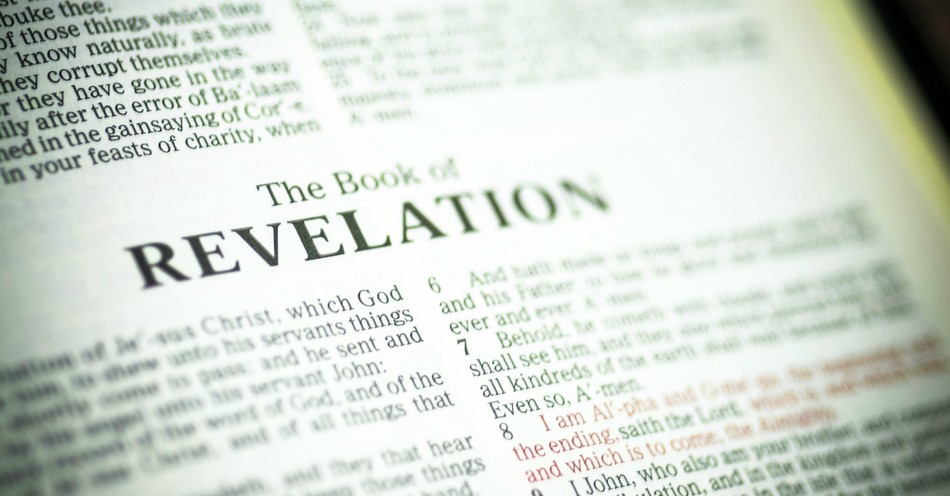What does it mean that the Bible contains apocalyptic literature? For that matter, what is the definition of apocalyptic? When people unfamiliar with biblical terms see or hear the word apocalyptic, their first thought is a catastrophe, doomsday, the world’s end. People think of Revelation as a scary look at what’s coming, what with the “four horsemen of the Apocalypse” and the lake of fire. Yes, Revelation does have some scary descriptions, but hopefully, this article dispels wrong thinking and instead points people to Jesus Christ and the truth of God’s Word.
Where Does the Word Apocalyptic Come From?
We see the word “apocalypse” a lot. Apocalypse is the unveiling. Apocalyptic is the genre.
As with any literature, it’s important to verify which biblical genre we are reading to enable as concise a meaning as possible. Observing, interpreting, and applying the text are keys to proper hermeneutics.
The Bible includes seven distinct genres:
- Historical, Law, or Narrative (bundled together because they have the same core traits)
- Wisdom
- Poetry
- Prophecy
- Apocalyptic
- Gospel
- Epistle
Richard A. Taylor, senior research professor of Old Testament studies at Dallas Theological Seminary, gives this definition of apocalyptic literature, “…the term apocalyptic is used in modern biblical studies to refer to a type of discourse that describes, usually in highly figurative terms, a sudden divine intervention in human history for the accomplishment of either salvific or judgmental purposes.”
In lay terms, apocalyptic literature is a biblical literature genre revealing God’s plans for the world, often using vivid symbolism combined with real events.
The word apocalyptic comes from the Greek apokaluptō meaning to reveal or unveil. The word describes a Jewish literary genre characterized by symbolic imagery to reveal God’s veiled, preordained behind-the-scenes works and future plans.
The genre became common in the 400 years from the second century BC to the second century AD. There are earlier examples. For example, Daniel 7-12 is the Old Testament’s foremost apocalyptic literature and was written before 100 BC.
Apocalyptic literature includes the following identifying traits:
- An anticipation of God infringing on history to shepherd in a qualitatively different life in the age to come.
- God’s messenger (or messengers) heralds communication to His chosen mouthpiece (i.e., human receptor).
- The recipient of the news is transferred to the heavenly kingdom, where continued communication ensues with God’s messenger.
- Dreams or visions are given to the recipient, which depict current hidden realities and God’s future interpositions.
- God’s future judgments are envisioned.
- Warnings portend future events of trials and tribulations for kingdom dwellers.
- Believers are encouraged to persevere amid tribulations with a focus on God’s work in the unseen world and in the kingdom to come.
A secular dictionary may define apocalyptic as especially referring to the end times (especially the book of Revelation), which is largely true. But the revealing nature of apocalyptic literature was relevant for the Jews in the first century, too.
Is There Apocalyptic Literature Outside the Bible?
Extra-biblical apocalyptic literature outside the authorized canon of Scripture is found in Jewish writings, mostly from 200 BC-100 AD. Examples include 1 and 2 Enoch, 4 Ezra, and 2 Baruch. The early church fathers classified these writings as pseudepigrapha—not inspired by the Holy Spirit and frequently outright false.
What Are Old Testament Examples of Apocalyptic Literature?
Portions of the books of Isaiah (24-27), Ezekiel (38-39), Joel (Joel 2:28-32), Zechariah (1-6), and Daniel (7-12) feature apocalyptic literature. Daniel holds the largest and most prevalent apocalyptic literature in chapters 7-12, and scholars consider it the only pure (according to genre qualifications) apocalyptic literature in the Old Testament.
Looking at Daniel 7-12, great changes in political powers are shown in the coming ages. Noteworthy are the battles described as coming in the second century BC. In chapter 12, Daniel has a vision that looks toward the culmination of history and the resurrection of the dead (Daniel 12:1-4).
What Are New Testament Examples of Apocalyptic Literature?
Revelation is the New Testament book of apocalyptic literature on most people’s radar. After the introduction, it starts with letters (Revelation 2:1-3:22), and a parallel of Old Testament prophecy may be found in Revelation 1:3. Chapters 4-22 are pure apocalyptic literature, and also consider the title of the book, “The Revelation (Apocalypse) of Jesus Christ.”
The same form of the term revelation appears in other portions of the New Testament: Luke 2:32, Romans 16:25, 1 Corinthians 14:6, 14:26, 14:30, Galatians 1:12, 2:2, Ephesians 1:17, 3:3, and 1 Peter 1:7, 13.
According to Easton’s Bible Dictionary, the Bible uses revelation to mean the following: “an uncovering, a bringing to light of that which had been previously wholly hidden or only obscurely seen. God has been pleased in various ways and at different times ( Hebrews 1:1 ) to make a supernatural revelation of himself and his purposes and plans, which, under the guidance of his Spirit, has been committed to writing. (See WORD OF GOD.) The Scriptures are not merely the ‘record’ of revelation; they are the revelation itself in a written form, in order to the accurate preservation and propagation of the truth.”
So, revelation means that God is unveiling something new. The book of Revelation is about showing what God plans, or what he is currently doing. We will not go into deep interpretation, but a sample passage is Revelation 5:5, “And one of the elders said to me, ‘Weep no more; behold, the Lion of the tribe of Judah, the Root of David, has conquered, so that He can open the scroll and its seven seals.’” In his vision, John the Apostle is in the throne room of heaven, and he sees the elders before the throne. John had wept because no one could be found to open the scroll. One of the elders (a messenger) comes to John and tells him Jesus Christ, The Lion of the Tribe of Judah, will break the seal, for He is worthy. (Jesus came to earth as a sacrificial Lamb. He will come again as a mighty Lion with absolute authority and might.)
How Should a Christian Approach Apocalyptic Literature?
As we saw earlier, it’s important that we understand the context and genre of what we read in the Bible. Apocalyptic literature confuses many because it uses symbolic images mixed with real events and things.
Remember to:
1. Pray before doing any Bible reading or study.
2. Pursue the biblical author’s intent when highly symbolic dreams and images are used.
3. Look for cross-references to see where else in Scripture the language may have been used. Scripture is the best interpreter of itself. For example, a lot of the book of Revelation stems from recurring themes and images found in the Old Testament, such as the divine appearance of the Son of Man (Ezekiel 1:26-28; Revelation 1:13-15), the water and Tree of Life (Ezekiel 47:1-12; Revelation 22:1-2), and God as the source of light for His people (Isaiah 61:19-20; Revelation 22:5).
4. Follow excellent hermeneutical methods to determine what is meant in the passage as best as you can. Grace Theological Seminary gives this easy-to-understand definition of hermeneutics:
“Biblical hermeneutics is the branch of knowledge that deals with interpretation. The word most often refers to how to interpret the Bible or other sacred texts from other religions. This is not to be confused with exegesis. Where exegesis refers to the interpretation of a specific Biblical text, hermeneutics is deciding which principles we will use in order to interpret the text.”
Don’t let the long and hard-to-spell branch of knowledge dissuade you. We all, as growing Christians, need solid biblical study procedures. And as the late pastor R.C. Sproul said, “everyone’s a theologian.”
Apocalyptic literature exists to encourage the saints in times of tribulation and to look forward to God’s coming fulfillment of His promises. Jesus spoke about how we must remain ready for persecution and His coming (Matthew 24:44; Luke 12:40; Luke 17:20-37; 2 Timothy 4:2). The message is always about Jesus and His victory over sin and death (1 Corinthians 15:55-57).
To that end, we must continue as His ambassadors (2 Corinthians 5:20), never losing hope (Luke 18:1; 2 Corinthians 4:16).
If you feel discouraged after reading apocalyptic literature in the Bible, then you’ve read it wrong. The point is always to give glorious, encouraging precedence to God’s unshakeable grip on human history, in which every believer rejoices and takes comfort. Whatever darkness lurks in the wake of human history, it is always far eclipsed by the sovereign hand of God Almighty and doomed to fail as the victorious, resurrected Christ moves to complete His unfailing work of redemption.
A Prayer for Guidance Reading God’s Word
Lord God, help us always to handle Your Word rightly. You have given us a treasure trove in the Bible. Help us treat it as such and praise You as we seek Your will, glory, and good. For it’s in Jesus’ name, we pray. Amen.
Photo Credit: ©GettyImages/dtimiraos

This article is part of our larger End Times Resource Library. Learn more about the rapture, the anti-christ, bible prophecy and the tribulation with articles that explain Biblical truths. You do not need to fear or worry about the future!
The Second Coming of Jesus
Who Are the 144,000 in Revelation?
Who Are Gog and Magog in the Bible?
What Is the Apollyon?
Is the Apocalypse Mentioned in the Bible?
Signs of the End Times and the Rapture




